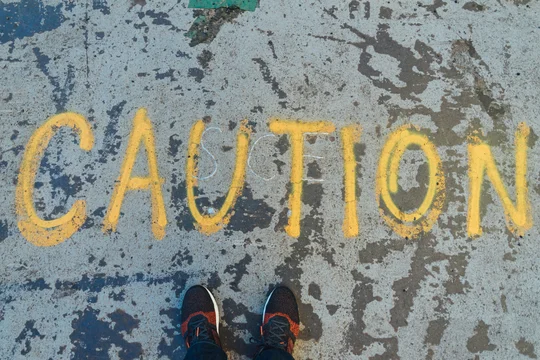
Yesterday Judge Williams issued an oral order in Board of Regents, The University of Texas System v. Boston Scientific Corporation, C.A. No. 18-392-GBW (D. Del.) addressing a dispute about whether plaintiffs could offer evidence of copying or other secondary considerations after they failed to disclose those argument until just before trial.
In a lengthy oral order, Judge Williams held that they had waited too long and are now precluded from offering evidence of copying or certain other secondary considerations.
According to the Court, plaintiff had failed to disclose its secondary considerations arguments despite numerous opportunities:
ORAL ORDER: . . . Plaintiff had several prior opportunities to advise [defendant] BSC of any claims of copying or other objective indicia of non−obviousness. Plaintiffs admitted that they disclosed only one secondary indicium of non−obviousness, "teaching away by prior art," in their response to BSC's interrogatory seeking what objective indicia of non−obviousness that Plaintiffs were asserting in this action. . . . Plaintiffs' First Amended Complaint, D.I. 124, and the two partial deposition transcripts that Plaintiffs submitted . . . on this issue . . . fail to mention the words "copy" or "steal" and thus could not have put BSC on notice of a copying defense. BSC's expert report recited various objective indicia of non−obviousness and explained the expert's understanding that Plaintiffs did not rely on those objective indicia of non−obviousness, which should again have prompted Plaintiffs to disclose such defenses if Plaintiffs were asserting any of them. . . . BSC specifically mentioned the lack of UTBOR's argument or evidence regarding the secondary considerations of commercial success or copying in its briefing on the Motion for Bifurcation, . . . and UTBOR did not refute BSC's argument, D.I. 253.
They had previously disclosed an argument on one secondary consideration, but that did nothing to help them here:
[T]he fact that Plaintiffs previously disclosed "teaching away by prior art" but did not previously disclose "copying" or any other objective indicia of non−obviousness is revealing.
The Court found that disclosure just two weeks before trial prejudiced the defendant (no kidding!):
To now permit UTBOR and TissueGen to assert and disclose previously−undisclosed defenses to BSC's invalidity counterclaims, such as copying and other objective indicia of non−obviousness, approximately two weeks before trial would be highly prejudicial to BSC. Significantly, the Court's Scheduling Order permitted BSC to "submit an expert opinion in reply to any expert report or opinion on objective indicia of non−obviousness[,]" . . . and Plaintiffs' lack of disclosure deprived BSC of the opportunity to submit such an opinion.
The Court addressed the (notorious) Pennypack factors, and found that they favored exclusion—even without a finding of bad faith:
Federal Rule of Civil Procedure 37(c)(1) provides: "If a party fails to provide information... as required by Rule 26(a) or (e), the party is not allowed to use that information... to supply evidence... at a trial, unless the failure was substantially justified or is harmless." The Third Circuit considers the Pennypack factors on such issues. An analysis of the Pennypack factors, which Plaintiffs agree apply here, D.I. 279 at 4, reveals that BSC would suffer substantial prejudice and there would be no way for the Court to grant BSC adequate time to prepare for Plaintiffs' new theories and have trial as scheduled; the parties' dispute signifies the importance of the objective indicia evidence; and the likelihood of substantial disagreements between the parties about the admissibility of evidence that supports objective indicia of non−obviousness, such as copying, could "disrupt the orderly and efficient trial of the case[,]" LabMD Inc. v. Boback, 47 F.4th 164, 189 (3d Cir. 2022). However, the Court does not assume Plaintiffs acted in bad faith. Further, the concept of "teaching away by prior art" is generally used to refute the idea that certain prior art alleged to render a patent obvious taught away from the patent at the time of the invention. See Galderma Lab'ys, L.P. v. Tolmar, Inc., 737 F.3d 731, 737−38 (Fed. Cir. 2013); In re Mouttet, 686 F.3d 1322, 1333 (Fed. Cir. 2012) ("A reference that properly teaches away can preclude a determination that the reference renders a claim obvious.").
Opinion: Why Exclusion Can Be a Good Thing
Pennypack is downright ancient (it issued in 1977), but the Court's treatment of it has varied over time. In some time periods, the judges have seemed to find preclusion easily, and in others it has been difficult to get things precluded. Lately it seems like the pendulum has swung back, and things are getting excluded again.
That's great, in my view. When the scheduling order isn't enforced, it only punishes those who follow it.
For a while there, it seemed like the Court had become hesitant to exclude things under Pennypack. I don't think it's just me—a couple of years ago, I remember hearing senior Delaware counsel from another firm advise a JDG to hold back on disclosing an argument, rather than being forthcoming, because "nothing gets excluded under Pennypack."
That's obviously wrong, but it's not hard to see how they came to that conclusion. And pushing back on that idea (as Delaware counsel) can be tricky without recent examples of things being excluded. So I'm always happy to to see the Court holding the parties to the scheduling order when they violate the rules.
If you enjoyed this post, consider subscribing to receive free e-mail updates about new posts.



